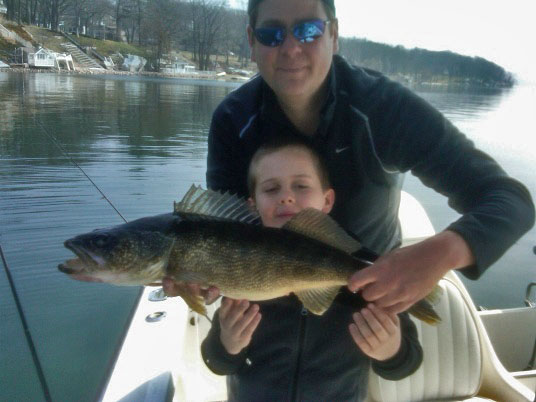
When I was 15, I cast a perch Rapala with my black Zebco bullet over some cribs and hooked a largemouth bass. When I walked with that mighty fish onto my parent’s lawn to show my father, he told me that I should keep it. Instead, I walked back to the pier, measured and weighed the fish (7 1/2 pounds), and let it go free. There are moments that I mildly regret not keeping that fish to hang on my wall, but those moments are fewer and fewer.
A few weeks ago I parked my boat at the Riviera piers and walked into town for lunch. There was a person fishing off those piers, a guy with some minnows and a bucket stuffed with some monster perch. Pre-spawn perch. Perch that must be free to swim and spawn in order to, you know, make more perch. When I was a kid, I would find stringers of fish hanging from pier posts. And when I’d find these fish I would let them go quickly and run back home. I thought of doing this to the guy with the bucket of perch, but instead I just mocked him loudly to the people who were nearby. I am a kind person, but I hate seeing fish killed. I was Paul Watson before Paul Watson was.
This desire to see fish live must have been ingrained in me as a child. Perhaps there were too many sessions of watching my uncle or grandpa stand in the water while using the pier as a fillet table. Too many fish flopping as their skin was cut away. Or maybe it’s the photos in old magazines and books, the ones showing several serious men standing behind their catch. You know the photos. They are all unique but they are all the same. Some men, a long stick, and a vast array of fish, varying in length and make, hanging from that stick that was shoved through their gills so they might pose for a picture. I’m worn out by people who don’t understand the fragile nature of a resource.
I was out fishing a few weeks ago on a chilly Saturday morning. Upon returning from the fruitless, frosty endeavor, my friend and I saw the folks from Walleyes For Tomorrow handling what appeared to be some very large fish. We tied up and went to investigate. There were tubs, great big plastic tubs, filled with monster walleye. There was a tub of males- small, unimpressive- and a tub filled with lethargic females, one seemingly bigger than the next. These were not sort of big fish. If they were caught in Leech Lake or Mill Lacs or Erie, these would have been considered trophy fish. Measuring up to 30′ and weighing well over 10 pounds, these were the spawning females caught the night before in nets placed over the shallow flats of Geneva’s north shore.
I watched as the men worked to squeeze the eggs from the females into a bowl. They’d squeeze the egg out of the female, then squeeze some milt out of the males, before finally mixing in some lake water and stirring the mildly disgusting slurry for a few minutes. They were fertilizing the eggs before placing them in incubators where they would grow and hatch a few weeks later. If the group is successful when this effort is over, they will have released as many as three million walleye fry back into Geneva. If the target success rate of one half of one percent is met, there will be 15,000 more walleyes swimming in Geneva.
Why must they do this? Well, that appears to be an interesting question. Geneva, as is no secret, is overfished. My grandpa and uncle and likely yours too did a fine job decimating fish populations. The walleye focus is derived from a concern that while there are giant female walleye in Geneva, the netting program didn’t yield hardly a single small female walleye. The cause of this, according to the guy squeezing the eggs and the other guy mixing those eggs like a fishy omelet, is because the natural reproduction of the fish has been impaired. There are theories as to why- the crayfish, the zebra mussels, some sort of slime on the rocks. Whatever the reason, the fine folks at Walleyes For Tomorrow decided to actually do something about it.
Their effort should be applauded, and perhaps, if you’re able, it should also be funded. The sooner we realize that fishing populations are not just automatically, naturally sustainable, the better off we’ll be. Don’t ask me why I’m making the face I’m making in that photo up there. I don’t know the answer.
